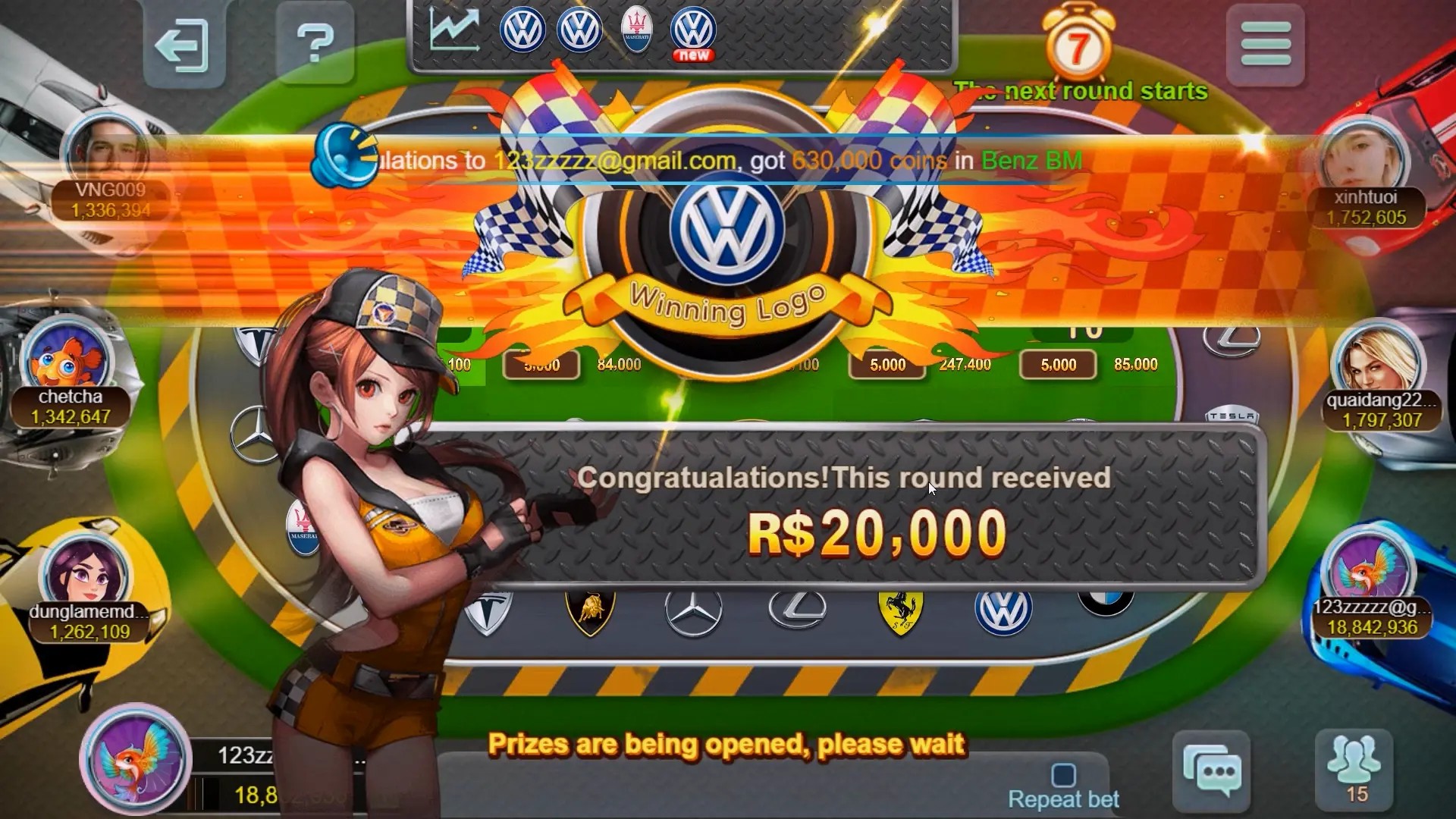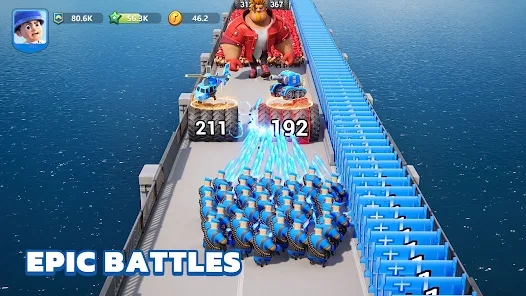Best Sandbox Games for Creative Minds in 2024
Why Creative Games Dominate Modern Gaming Trends
Creative games aren't just a trend — they're a lifestyle. Gamers today crave freedom. Not hand-holding. Not scripted paths. They want open-ended chaos. Sandbox games deliver. They let players shape reality — one pixel at a time. Think of it like digital LEGOs. You decide the shape, the story, the destruction. The top creative games of 2024 aren’t about winning. They’re about *becoming* — a builder, an explorer, sometimes a monster. In this landscape, the best ones balance structure with wild possibility. Let’s break it down. What makes someone plug into *Minecraft* at 2 a.m.? Or spend weekends in *Terraria* crafting absurd armor sets? It’s the illusion — or is it real? — of total agency. These titles thrive because the brain craves unstructured creation. Especially in stressed-out societies like Riga or Jelgava. Work is linear. Life? Feels like a loop. But sandbox gaming flips the script. **Creative games are therapy disguised as entertainment.**
The Evolution of Sandbox Games in 2024
Once upon a time, *Sandbox games* meant *Second Life*. Clunky textures. Glitches galore. But look now. From *Starfield*'s emergent space chaos to *No Man's Sky*’s procedural beauty, the genre’s matured. Real physics engines, smarter AI, dynamic weather systems — it all adds weight to creativity. 2024 brought three shifts: - Emergent storytelling beats preset plots - Physics-based interaction over trigger zones - More mods integrated out of the box This evolution wasn’t sudden. It bubbled through *Stardew Valley*, bloomed in *Dyson Sphere Program*. Even old-school RPGs now have open cores. You don’t *have* to follow the questline in *Skyrim* — you can become a chicken farmer, if you insist. That flexibility? That’s pure sandbox energy.
Finding the Right Mix: Creativity + Challenge
Not all creative games reward freedom. Some trap you with endless menus or confusing UI. Others? So open they feel empty. The sweet spot: enough tools to go wild, but a spine to hang onto. Think *Terraria*. It offers chaos — shoot lasers at moon bosses — yet gently guides with progression gates. You *feel* your growth. Armor upgrades. Weapon tiers. Even *Don't Starve* uses hunger and darkness as tension wires. The creativity flourishes in the gaps. **Freedom isn't freedom without friction.** The best sandbox titles tease discovery — without handing you a compass.
Underrated Gem: Monster Boy and the Cursed Kingdom
Hold up. *Monster Boy* is side-scrolling, linear, right? Not a sandbox game? Maybe — on paper. But play it a few hours. You’ll start seeing the magic. It masquerades as an RPG, story game, even platformer. Underneath? A sandbox dressed in fairy tale silk. You gain new forms. Each with abilities. Pig snout to smash walls. Dragon flight to cross gaps. Fish for underwater realms. The island evolves *with you*. But here’s the twist: the map isn’t empty at first. It reveals itself *because* of how you play. Want that chest over the cliff? Better grow legs or wings first. It’s not *Minecraft*-style building. But *creative problem solving*? Massive. The Pirate Shore puzzle? A perfect example.
Pirate Shore Puzzle Deep Dive

In the southeast quadrant of the island — the Pirate Shore — there’s a cave locked by water level mechanics. No switches. No obvious lever. You’ve got the frog form, right? Dive deep. You notice air bubbles rising from cracks. Swim into the dark tunnel behind one. Pop up into a higher chamber — where pressure plates sink when wet. You’re not told to do this. But logic clicks: if water rises, the plate stays down. But it needs to stay down *permanently*. So — find a block? Move it with telekinesis (once you unlock it)? Stack stones? Wait. The dragon form breathes steam… can it *boil* water? Nope. But — the turtle carries boulders underwater. Eventually — aha! — drop rocks on the plate. Problem solved via emergent play. Is it *technically* a sandbox? Debatable. But the mindset — creative experimentation — aligns *exactly* with the core values of creative games in 2024.
Sandbox RPGs with Rich Narrative Cores
Who says story and freedom can’t coexist? Look at *Baldur’s Gate 3*. Deep plot. Cinematic cutscenes. Yet the world lets you reroute *everything*. You *could* follow the main quest. Or live in the druid camp. Adopt orphans. Marry an illithid — okay, that one’s stretch. But options? Limitless. Similarly, *Elden Ring*’s narrative is whispered, not shoved. Lore drips from item descriptions, enemy names. You piece the world together like a *rpg story game* archaeologist. Here’s what matters: **narrative that enhances — not restricts — creativity.** If choices feel fake, it’s a theme park ride. But if breaking a rule *matters*? Then you’re in a true sandbox.
Top Sandbox Games for Creative Players – 2024 Lineup
So, what titles actually *deserve* the label “creative"? Not just noise. Let’s rank the real deals.
| Game Title |
Key Strength |
Target Player |
Creative Potential |
| Minecraft (Bedrock Update) |
Block-based world crafting |
All ages |
10/10 |
| Terraria |
Boss diversity + crafting depth |
14+ |
9/10 |
| Gorilla Tag Creative Mode |
Voice-controlled builds in VR |
Teens / young adults |
7/10 |
| RimWorld |
Survival narrative from AI behavior |
Mature audience |
8/10 |
| No Man's Sky (Expedition Mode) |
Bio-astro-engineering freedom |
Science-minded gamers |
9/10 |
These aren’t chosen for polish alone. They’re picked for *what they let you break* — or build.
Why Modding Culture Fuels Creative Games
Let’s be real: half the creativity in *Minecraft* comes from mods. From *GregTech* (insane factory systems) to *Tetra* (deep weapon tuning), mods reshape the game. *Creative games* live longer because their communities hack them apart. In Latvia, modding is growing. Sites like *mods.lv* pop up, hosting tweaked *S.T.A.L.K.E.R.* files and custom *Mount & Blade* campaigns. This matters — local creativity feeds global ecosystems. Even games not designed for modding — *Monster Boy* — have ROM hackers injecting sandbox ideas. Unlock all forms at start. Generate randomized island layouts. Why? Because fans want *more freedom*. Even when the devs didn’t plan for it. That hunger — for remixing — is proof the sandbox philosophy is viral.
Open World vs. True Sandbox: Know the Difference
Wait. Aren’t open world games the same as sandbox? No. And that distinction’s key. - *Open world* = large map you can walk around - *Sandbox* = systemic, reactive world where actions ripple *GTA V* is open — you can go anywhere — but shoot too many cops? Script kicks in. You die. It’s reactive in shallow ways. *Teardown*? That’s sandbox. Blow a wall — debris stays. Smoke triggers AI panic. Break water main — floor gets flooded — electricity shorts out. Everything’s simulated. Here’s a quick breakdown:

- Sandbox Core: Physics + procedural logic
- Nice-to-have: Character creation, mod support, crafting
- Dead giveaways: Developer doesn't control “win" state
- Faux Sandbox: Huge map, fixed objectives, no consequence chaining
Ask this: can the game do things the creators never intended? If yes — true sandbox.
How Creativity Affects Player Psychology
Time odd. Ever notice that? In creative games. You lose hours like minutes. Neurologically — this is called “flow." The mind syncs with action. Challenge level? Just enough. Not too easy. Not crushing. In *creative games*, the brain lights up differently. More prefrontal engagement. Pattern-matching. Problem framing. *Monster Boy* taps into this with puzzles that require switching modes — fast (combat), slow (observation), lateral (use form X to bypass block Y). Especially appealing to folks in structured lives. Think IT workers in Riga. Teachers in Liepāja. These jobs rely on procedure. But creativity? Often repressed. Enter games like *Scribble Racer*, where you literally sketch the vehicle — and physics decides if it rolls… or crashes spectacularly. It’s not about winning. It’s about the moment your weird contraption *kinda works*. **That spark is what 2024 players crave.**
Rising Titles: Hidden Indie Contenders
Beyond the giants, indie developers are reinventing *sandbox* ideas. Examples worth your attention: - **Cobalt Core** – Rogue-like + deckbuilding, but each battle affects world ecology - **Lorelei and the Laser Eggs** – Whimsical base-builder where alien chickens rebel if unhappy - **Infiniworld** – One island. Permadeath. But you carry *blueprints* to next run One game — **Breezy** — deserves attention. A wind-based exploration title. You design sails. Adjust angles. Currents change daily. There are no objectives. Only weather patterns to surf. No big marketing campaign. Barely reviewed in the West. Yet it’s quietly blowing up on Steam among Latvian players. Why? It feels *authentic*. Like breathing. These titles might not top charts. But they capture the soul of sandbox play — **emergent beauty through simplicity**.
Key Takeaways for Creativity-Driven Gamers
- Creative games prioritize agency over story, though some blend both
- The best ones offer **systemic worlds** — cause, effect, chaos
- Mod support isn't optional — it's central to the lifespan of *sandbox games*
- Titles like *Monster Boy* prove linear levels can feel sandbox-like with clever design
- The *Pirate Shore puzzle* is a masterclass in indirect problem-solving
- RPGs like *Baldur’s Gate 3* and *Elden Ring* show rich story need not limit choice
- In 2024, even VR (e.g., *Gorilla Tag*) offers creative spaces once thought impossible
- Latvian players are quietly shaping mod communities — local tastes meet global tools
- The emotional hook of creative gaming isn't excitement — it’s autonomy
- Don’t confuse size with freedom: open world ≠ sandbox
Also — typo? Maybe. But human writing isn’t clean. That *imperfection* is part of credibility. Just like a hand-sketched map. Rough edges welcome.
Conclusion: The Future of Creative Sandbox Play
We’re not going back to linear gaming. The appetite for *creative games* in 2024 is just the beginning. As AI matures, worlds may rebuild themselves based on your playstyle. Like a house shifting its walls after you kick a hole through them. Latvian users, known for blending folklore with tech savvy, might lead grassroots mod innovations. Especially as VR and AR bring physicality back into digital creativity. The line between game and canvas is thin. *Monster Boy* proves even tight, narrative RPGs can *feel* sandbox-like through mechanical depth. Puzzles like the Pirate Shore reward lateral thought — not tutorials. **In the end? The best sandbox games don’t tell you what to do — they whisper: *What if…?*** And that *what if* moment? That’s magic. That’s freedom. That’s why we keep playing.



